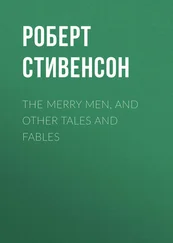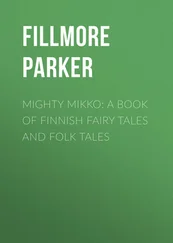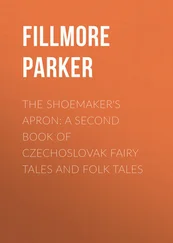Gustavo Bécquer - Legends, Tales and Poems
Здесь есть возможность читать онлайн «Gustavo Bécquer - Legends, Tales and Poems» — ознакомительный отрывок электронной книги совершенно бесплатно, а после прочтения отрывка купить полную версию. В некоторых случаях можно слушать аудио, скачать через торрент в формате fb2 и присутствует краткое содержание. Жанр: foreign_prose, literature_19, foreign_antique, на английском языке. Описание произведения, (предисловие) а так же отзывы посетителей доступны на портале библиотеки ЛибКат.
- Название:Legends, Tales and Poems
- Автор:
- Жанр:
- Год:неизвестен
- ISBN:нет данных
- Рейтинг книги:5 / 5. Голосов: 1
-
Избранное:Добавить в избранное
- Отзывы:
-
Ваша оценка:
- 100
- 1
- 2
- 3
- 4
- 5
Legends, Tales and Poems: краткое содержание, описание и аннотация
Предлагаем к чтению аннотацию, описание, краткое содержание или предисловие (зависит от того, что написал сам автор книги «Legends, Tales and Poems»). Если вы не нашли необходимую информацию о книге — напишите в комментариях, мы постараемся отыскать её.
Legends, Tales and Poems — читать онлайн ознакомительный отрывок
Ниже представлен текст книги, разбитый по страницам. Система сохранения места последней прочитанной страницы, позволяет с удобством читать онлайн бесплатно книгу «Legends, Tales and Poems», без необходимости каждый раз заново искать на чём Вы остановились. Поставьте закладку, и сможете в любой момент перейти на страницу, на которой закончили чтение.
Интервал:
Закладка:
Spanish versification has nothing to do with the quantity of vowels (whether long or short), which was the basis of Latin prosody.
There are four important elements in Spanish versification. Of these four elements two are essential, and the other two are usually present.
The essential elements, without which Spanish verse cannot exist, are—
I. A determined number of syllables per line.
II. A rhythmic distribution of the accents in the line.
The additional elements usually present in Spanish poetical compositions are—
III. Caesural pauses.
IV. Rhyme.
I. SYLLABIFICATION
Consonants.—In verse the same rules hold as in prose for the distribution of consonants in syllables.
Vowels.—If there were but one vowel in a syllable, Spanish syllabification would be easy; but sometimes two or more vowels are found either between consonants, or at the beginning or at the end of a word. When such is the case, intricacies arise, for sometimes the contiguous vowels are pronounced in a single syllable and sometimes they are divided into separate syllables.
The contiguous vowels may belong to a single word (see A); or they may be the final vowel or vowels of one word and the initial vowel or vowels of a following word or words (see B).
A. Diphthongization ,—If two contiguous vowels of a single word are pronounced in but one syllable they form a diphthong, e.g. hu^esped .
B. Synalepha .—If two or more contiguous vowels belonging to two or more words are pronounced in a single syllable, they form synalepha.
Ex. Yo sé^un himno gigante y^extraño , p. 164, I, l. 1.
Since Spanish verse depends upon a determined number of syllables per line, diphthongization and synalepha are important factors in versification.
Mute h between vowels is disregarded and does not prevent diphthongization, e.g. a^h^ora , re^h^usar .
The separation of two vowels that are usually united in one syllable is called diaeresis , e.g. vi|oleta .
The union in one syllable of two vowels that are usually in separate syllables is called synaeresis , e.g. ca^os .
The vowels may be divided into strong vowels (a, e, o) and weak vowels (i, u). For purposes of versification y as a vowel may be treated as i. The five vowels (a, e, o, i, u) taken in pairs may form diphthongs in twenty-five possible combinations, as follows:
a. Pairs of two weak vowels: ui, iu, ii, uu.
b. Pairs of two strong vowels:
{ ae, ao, aa,
{ ea, eo, ee,
{ oa, oe, oo.
c. Pairs of a strong vowel plus a weak vowel
{ ai, au,
{ ei, eu,
{ oi, ou.
d. Pairs of a weak vowel plus a strong vowel
{ ua, ue, uo,
{ ia, ie, io.
NOTE: In diphthongs a dominates o and e; and o dominates e. Any strong vowel dominates a weak one.
Ex. In Bo^abdíl, if a were not dominant, the diphthong would be dissolved.
There are with regard to accent three possible conditions under which two contiguous vowels may occur within a word.
a. The contiguous vowels may precede the accented syllable.
b. One of the contiguous vowels may be accented.
c. The contiguous vowels may come after the accented syllable.
a. Two contiguous vowels before the accent.
(1) Of the twenty-five possible combinations all are admissible in diphthongs in a syllable preceding the accented syllable.
Ex. Habrá po^esta , p. 165, IV, l. 4.
(a) Diaeresis may be employed to dissolve the diphthong.
Ex. Sobre una vi|oleta , p. 169, XIII, l. 8.
b. One of two contiguous vowels accented.
(1) When two contiguous vowel's are strong.
(a) There is no diphthong if one of two contiguous strong vowels receives the accent.
Ex. Chispë|ando el sol hiere , p. 173, XXVI I, l. 17.
Ex. Tú, sombra a|érea que, cuantas veces , p. 170, XV, l. 7.
By synaeresis, however, a diphthong may be formed, especially in the combinations á^o, á^e, ó^e— c^a^o^s, c^a^e, ro^e . But in order to diphthongize oa, ea, and eo, when the accent naturally falls on the first vowel, the accent must shift to the second, which is a dominant vowel. Such diphthongization is harsh. For example, loa would shift the accent from o to a in order to form a diphthong. The accent would also shift in cre^a, fe^o .
(2) When one of the contiguous vowels is weak and the other strong.
(a) There is no diphthong if an accented weak vowel precedes a strong.
Ex. Yo, que á tus ojos en mi agoní|a , p. 171, XV, l. 18. Synaeresis is, however, sometimes employed to overcome this rule. The accent must then shift.
Ex. Habi^a llegado una nave. Calderón.
(b) There is no diphthong if an accented weak vowel follows a strong.
Ex. ¿Cómo puede re|ir? p. 182, XLIX, l. 4.
Synaeresis serves sometimes to overcome this rule. The result is usually harsh.
Ex. En re^ir á costa ajena, les prepara.
(c) If an accented strong vowel precedes a weak, they form a diphthong. The diphthong is rarely dissolved, and is usually marked with a diaresis, if dissolution takes place.
Ex. Beso del aura, onda de luz , p. 170, XV, l. 5.
(d) If an accented strong vowel follows a weak they may or may not form a diphthong.
Ex. Por una sonrisa, un ci^elo , p. 172, XXIII, l. 2. [Diphthong.]
Ex. Domando el rebelde, mezquino idï|oma , p. 164, I, l. 6. [No diphthong.]
Diaeresis or synaeresis may usually be employed according to the case.
Thus, fiel becomes by diaeresis fi|el , and br|ioso becomes by synaeresis bri^oso .
It should be remembered that in some words the accentuation is variable, while in others it is fixed.
There are two classes of words that have a variable accentuation: first, those in which an unaccented weak vowel is followed by an accented strong vowel, e.g. majestu^oso , majestu|oso ; second, those in which an accented strong vowel is followed by an unaccented strong vowel, e.g. tra|e, tra^e.
Ex. Cre^es que la afe|an . Becquer.
Cre|es que suspirando pasa el viento , p. 171, XVI, l. 3.
Etymological conditions often determine whether or not a diphthong is formed.
ie and ue, derived from the Latin e and o respectively, form indissoluble diphthongs.
The ending -ión for substantives is usually a diphthong and rarely suffers dissolution.
Synaeresis may be employed to unite in a single syllable two contiguous vowels (unaccented weak + accented strong) that are separated on account of etymology, or, in the case of derivatives, analogy with the original word; but diaeresis is employed very rarely to dissolve a proper diphthongal combination (unaccented weak + accented strong).
For example, di|ario by analogy with día , and fi|ó from the Latin fidavit , have ordinarily the i in separate syllables, but a diphthong may be formed by synaeresis.
(3) When the two contiguous vowels are weak .
(a) Two contiguous weak vowels with the accent on the first form an indissoluble diphthong, e.g. mu^y .
(b) Two contiguous weak vowels with the accent on the second may or may not form a diphthong.
Ex. Si antes no juras que por ru^in falsía . Hermosilla. [Diphthong.]
Ex. Con sus mil rü|idos , p. 188, LXXIII, l. 19, [No diphthong.]
Читать дальшеИнтервал:
Закладка:
Похожие книги на «Legends, Tales and Poems»
Представляем Вашему вниманию похожие книги на «Legends, Tales and Poems» списком для выбора. Мы отобрали схожую по названию и смыслу литературу в надежде предоставить читателям больше вариантов отыскать новые, интересные, ещё непрочитанные произведения.
Обсуждение, отзывы о книге «Legends, Tales and Poems» и просто собственные мнения читателей. Оставьте ваши комментарии, напишите, что Вы думаете о произведении, его смысле или главных героях. Укажите что конкретно понравилось, а что нет, и почему Вы так считаете.












